|
Sunday:
July 25, 2004 | |
0215 GMT |
 |
Gas between galaxies helps case for dark energy
Using observations of 3,000 quasars discovered by the Sloan Digital Sky Survey, scientists have made the most precise measurement to date of the cosmic clustering of diffuse hydrogen gas. These quasars -- 100 times more than have been used in such analyses in the past -- are at distances of eight to ten billion light years, making them among the most distant objects known.
 FULL STORY FULL STORY
 |  |

|
 |
Landing technology tested for future spacecraft
Lockheed Martin has successfully performed a series of drop tests at the U.S. Army Yuma Proving Ground in Yuma, Ariz., to validate soft landing technology that can be used for astronaut crew capsules upon return to Earth.
 FULL STORY FULL STORY
 |  |

|
 |
OTHER HEADLINES Additional stories today
|
 |
Space station status report -- The International Space Station's Expedition 9 crewmembers are now past the halfway point of their six-month mission. This week, they prepared for a third spacewalk and joined the world in observing the 35th anniversary of the first landing of humans on the moon.

Statement from ISS Heads of Agency meeting -- The space agency leaders from the United States, Russia, Japan, Europe and Canada met Friday to discuss International Space Station cooperation activities. At this meeting, the partnership unanimously endorsed the station technical configuration and reviewed the status of on-orbit operations and plans. The new ISS configuration is planned for completion by the end of the decade and will accommodate on-orbit elements from each of the ISS Partners. The configuration will enable increased utilization and will provide early opportunities for an enhanced crew of greater than three people.
|
 |
|
Saturday:
July 24, 2004 | |
0119 GMT |
 |
A day in the lives of galaxies
Like a photographer clicking random snapshots of a crowd of people, NASA's Hubble Space Telescope has taken a view of an eclectic mix of galaxies. In taking this picture, Hubble's Advanced Camera for Surveys was not looking at any particular target. The camera was taking a picture of a typical patch of sky, while Hubble's infrared camera was viewing a target in an adjacent galaxy-rich region.
 FULL STORY FULL STORY
 |  |

|
 |
Cassini sees the moon Tethys: The Sea Goddess
Like a half-full moon, cratered Tethys hangs before the Cassini spacecraft in this narrow angle camera view. Voyager images showed a large fracture on Tethys about 470 miles long. Cassini will investigate this and other features on Tethys during two planned flybys beginning next year.
 FULL STORY FULL STORY
 |  |
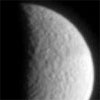
|
 |
OTHER HEADLINES Additional stories today
|
 |
Minuteman 3 missile test launch successful -- An unarmed Minuteman 3 intercontinental ballistic missile was successfully launched from North
Vandenberg Air Force Base in California at 0837 GMT Friday.
|
 |
|
Friday:
July 23, 2004 | |
0452 GMT |
 |
Stunning true-color picture of Saturn's rings
With shimmering pinks, hues of gray and a hint of brown, a newly released image of Saturn's rings resembles a fresco where nature is the painter. The Cassini spacecraft captured this exquisite natural color view a few days before entering orbit around Saturn.
 FULL STORY FULL STORY
 |  |
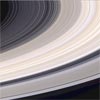
|
 |
Newborn star provides info on solar system's origin
A new study has caught a newborn star similar to the sun in a fiery outburst. X-ray observations of the flare-up, which are the first of their kind, are providing important new information about the early evolution of the sun and the process of planet formation.
 FULL STORY FULL STORY
 |  |

|
 |
NASA goes to the 'SORCE' of Earth sun-blockers
Scientists using measurements from NASA's Solar Radiation and Climate Experiment (SORCE) satellite have discovered that Venus and sunspots have something in common: they both block some of the sun's energy going to Earth.
 FULL STORY FULL STORY
 |  |

|
 |
|
Thursday:
July 22, 2004 | |
0250 GMT |
 |
Cassini sees crescent Rhea
The first artificial satellite in the Saturn system, the Cassini spacecraft, returned images of the natural moons following a successful insertion into orbit. This is an unmagnified view of the moon Rhea.
 FULL STORY FULL STORY
 |  |
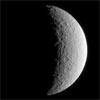
|
 |
From Mojave to the moon: Armstrong's early years
The B-29 mothership shuddered, and pilot Neil Armstrong, flying the airplane from the co-pilot's seat, glimpsed a bullet-shaped propeller hub shoot past the cockpit. He looked over and saw that the number four propeller had disintegrated.
 FULL STORY FULL STORY
 |  |

|
 |
Mercury orbiter delivered to Florida launch pad
NASA's MESSENGER space probe took a night owl drive early Wednesday from its processing hangar to launch pad 17B at Cape Canaveral where it was mounted atop the Boeing Delta 2-Heavy rocket in preparation for blastoff to the planet Mercury.
 FULL STORY FULL STORY
 |  |

|
 |
OTHER HEADLINES Additional stories today
|
 |
NASA Television is switching satellites July 24 -- NASA Television will improve coverage to viewers in Alaska and Hawaii as well as the continental United States when it switches its signal from one satellite to two different ones.

Peacekeeper launch from Vandenberg is successful -- An unarmed Peacekeeper intercontinental ballistic missile was successfully launched Wednesday from a launch facility on North Vandenberg Air Force Base, California. The missile carried 8 unarmed re-entry vehicles approximately 4,800 miles to a predetermined target at the Reagan Test Site on the Kwajalein Atoll.

Minuteman 3 missile test launch scheduled -- An unarmed Minuteman 3 intercontinental ballistic missile is scheduled for launch from North Vandenberg Air Force Base, California, on Friday morning as part of the Force Development Evaluation Program.
|
 |
|
Wednesday:
July 21, 2004 | |
0250 GMT |
 |
Doughnut-shaped cloud has 'black hole' filling
An international team of scientists has found more evidence that massive black holes are surrounded by a doughnut-shaped gas cloud which, depending on our line of sight, blocks the view of the black hole in the center.
 FULL STORY FULL STORY
 |  |

|
 |
New martian meteorite found in Antarctica
While rovers and orbiting spacecraft scour Mars searching for clues to its past, researchers have uncovered another piece of the red planet in the most inhospitable place on Earth -- Antarctica.
 FULL STORY FULL STORY
 |  |

|
 |
New date established for delayed Atlas launch
Launch of the final Lockheed Martin Atlas 2AS rocket is being delayed another four weeks so technicians can replace transistors inside an avionics unit as a precaution. Liftoff is now targeted for August 31 from Cape Canaveral, Florida.
 MISSION STATUS CENTER MISSION STATUS CENTER
 |  |

|
 |
Newest GPS satellite begins service for users worldwide
Lockheed Martin and the U.S. Air Force have completed on-orbit checkout of the upgraded Global Positioning System satellite launched successfully June 23 from Cape Canaveral. The spacecraft has been declared fully operational for military and civilian navigation users around the globe.
 FULL STORY FULL STORY
 LAUNCH COVERAGE LAUNCH COVERAGE
 |  |
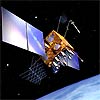
|
 |
|
Tuesday:
July 20, 2004 | |
0057 GMT |
 |
Cassini shows the dark side of Saturn's moon Dione
The icy, cratered surface of Saturn's moon Dione shows more than just its sunlit side in these two processed versions of the same image from the Cassini spacecraft.
 FULL STORY FULL STORY
 |  |
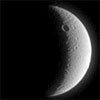
|
 |
Spitzer pinpoints elusive but violent starbursts
A major breakthrough in pinpointing some of the most primordial and violently star forming galaxies in the Universe has been made by a joint collaboration of U.K. and U.S. astronomers using the Spitzer Space Telescope to resolve primordial galaxies initially detected by a ground-based observatory.
 FULL STORY FULL STORY
 |  |

|
 |
First engine tested for shuttle return to flight
NASA's Stennis Space Center in Mississippi has successfully tested one of the engines that will carry the next space shuttle into orbit. The engine will be shipped to NASA's Kennedy Space Center for installation on the space shuttle Discovery.
 FULL STORY FULL STORY
 |  |

|
 |

Additional coverage for subscribers:
 VIDEO:
WATCH THE SHUTTLE MAIN ENGINE TEST-FIRING QT VIDEO:
WATCH THE SHUTTLE MAIN ENGINE TEST-FIRING QT
 SUBSCRIBE NOW SUBSCRIBE NOW

|
|
Monday:
July 19, 2004 | |
0129 GMT |
 |
Satellite sees 'sprites' in the upper atmosphere
Photos of red sprites, blue jets, elves and sprite halos are now flowing into the University of California, Berkeley's Space Sciences Laboratory from the first satellite instrument devoted to the study of these puzzling high-altitude lightning flashes.
 FULL STORY FULL STORY
 |  |

|
 |
Autonomous rendezvous craft goes to Vandenberg
The Demonstration for Autonomous Rendezvous Technology (DART) flight demonstrator, a spacecraft developed to prove technologies to locate and maneuver near an orbiting satellite, has arrived at Vandenberg Air Force Base in preparation for a fall 2004 launch.
 FULL STORY FULL STORY
 |  |

|
 |
Tropical Rainfall Measuring Mission to end
NASA will decommission the Tropical Rainfall Measuring Mission later this year. A highly successful scientific research mission, TRMM has provided data used worldwide in the monitoring and forecasting of hazardous weather on a demonstration basis.
 FULL STORY FULL STORY
 |  |
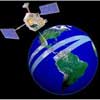
|
 |



